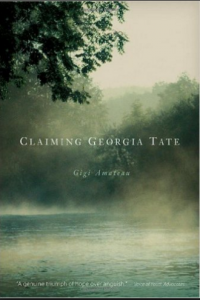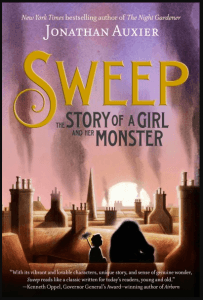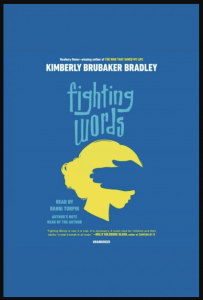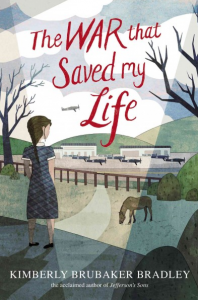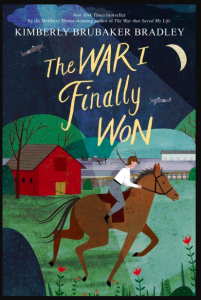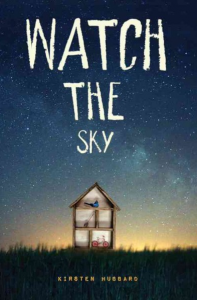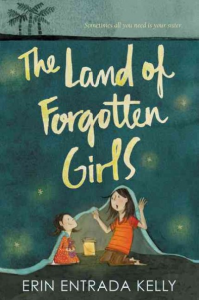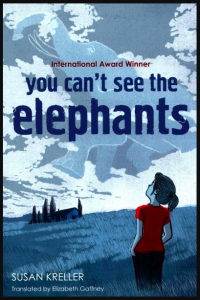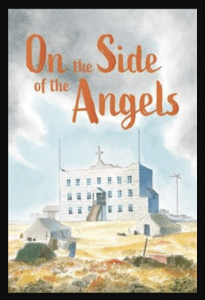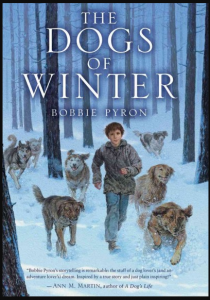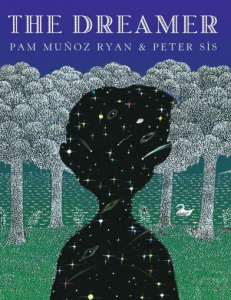Stories about people who have survived mistreatment and abuse…
Amateau Gigi. Claiming Georgia Tate. Cambridge, Mass.: Candlewick Press, 2005.
“Twelve-year-old Georgia Tate feels loved and safe living with Nana and Granddaddy, until her sexually abusive father tries to win her custody.” – FVRL. Sent to live with her father in Florida, Georgia escapes with the help of a transsexual living in a neighbouring apartment. On the long bus journey back home to Mississippi, she meets an African-American on his way home after being falsely imprisoned. This 196-page novel told from the first-person point of view is recommended for readers 13-years-old and up. Shorter and easier to read than The Lions of Little Rock by Kristin Levine, it is similar in its depiction of a character who learns to stand up for what is right. [Abuse; Courage; Custody of children; Fathers and daughters; Grandparents; Incest; Mississippi; Racism]
Auxier, Jonathan. Sweep: the Story of a Girl and Her Monster. Toronto: Puffin Canada, 2018.
Nan Sparrow is a chimney sweep, forced to climb up chimneys and clean out soot, in 19th century London. Over a hundred years ago, before the age of electricity, houses had fireplaces. And every fireplace had to be regularly cleaned. Clambering up those narrow chimneys was the job of young children forced into labour due to poverty. The golem in this novel is – of course – a mythological creature. But the setting is real. Life really was as difficult for some children as depicted in this story. So you’ll be learning more about what it felt like to live during Victorian times, as well as enjoying a fantasy novel with a courageous and spunky heroine.
Bauer, Joan. Close to Famous. New York: Viking, 2011.
Twelve-year-old Foster and her mother run away from her mother’s abusive boyfriend who pretends to be Elvis. Late at night, the two of them get in their car and start driving, not stopping until they arrive in a small West Virginia town where Foster makes new friends and starts her own business: baking cupcakes. A heart-warming and courageous novel for readers 11 years old and up. [Baking; Courage; West Virginia; Single-parent families; Mothers and daughters; Perseverance (Ethics); Violence; Television; Moving (Household)]
Blankman, Anne. The Blackbird Girls. New York: Viking, 2020.
Valentina and Oksana live in the specially built city of Pripyat, home to workers at the Chernobyl nuclear plant. They are classmates but not friends. Valentina is Jewish and the target of bullying. Initially, it seems that Oksana has a better life but all is not as it appears on the surface. When the reactor at the plant explodes, the girls and their mothers are abruptly evacuated. The girls escape to far-away Leningrad to live with Valentina’s grandmother, where secrets are slowly revealed and the girls learn whom they can trust. A complex yet hopeful novel, told from alternating points of view and based on historical events of both 1986 and the 1940s, highly recommended for readers 11 years old and up.
Bradley, Kimberly Brubaker. Fighting Words. New York: Dial Books for Young Readers, 2020.
Another novel with a ten-year-old main character, Della. But this time the story is not so cheerful. Not on the surface and not underneath, either. Della has always had a protector: her older sister Suki. When their mother was in prison, Suki took care of her. When their mother’s boyfriend did something terrible, Suki took care of her. But now Suki has tried to commit suicide and it’s time for Della to speak up and tell the truth. Neglect and abuse were addressed in a previous novel by Kimberly Brubaker Bradley – The War That Saved My Life set in World War II England – and now these problems occur in a story set in present-day America. Only this time, the description is grittier and the issues more immediate. A realistically hopeful novel recommended for mature readers 11 years old and up.
Bradley, Kimberly Brubaker. The War That Saved My Life. New York: Dial Books for Young Readers, 2015.
Evacuated from London during World War II, a sister and brother find respite from their abusive mother. Recommended for readers 11-years-old and up.
Bradley, Kimberly Brubaker. The War I Finally Won. New York: Dial Books for Young Readers 2017.
Do you need courage to have hope? Can you know something but not believe it? How do you learn to overcome fear? The story of Ada and Jamie, evacuated from London in The War That Saved My Life, continues in this 385-page novel recommended for readers 12 years old and up.
The story begins with surgery to repair Ada’s clubfoot. But surgery can’t repair the sense of rejection she still feels from years of abuse. And surgery can’t teach her how to trust anyone except herself. It is steadfast love from her new guardian and her own determination to learn that transforms Ada from a fearful 11-year-old to a confident 14-year-old ready to embrace the goodness of life. P.S. Part of the brilliance of this novel is its quiet complexity. While told from the limited point of view of Ada, the reader sees that we all have limited points of view. And sometimes our lack of knowledge limits our ability to see clearly. Lady Thorton is stand-offish due to limitations imposed by her childhood. People in the village mistrust Ruth – a Jewish refugee – due to ignorance of events in Germany. Susan assumes she will be rejected by a friend’s family, and Maggie thinks her mother doesn’t care about her. Over and over again, we see that life may have been terrible in the past but it can still be good in the future. And we are all lovable. [England; Evacuees; Historical fiction; World War 2]
Cassidy, Anne. Hidden Child. Toronto: Scholastic, 1997.
Lou has long known that her mother steals. But she is tired of moving all the time. Haunted by vague memories of another life, she starts a search for the truth. Who was her father? Who really is her mother? Another suspenseful novel about the complexities of truth by the author of Looking for JJ. [Homelessness; Mothers and daughters; England; Secrets; Theft; Moving (Household); Abuse; Violence; Marriage]
Dyer, Hadley. Johnny Kellock Died Today. HarperTrophy Canada, 2006.
When twelve-year-old Rosalie’s cousin disappears during the summer of 1959, she and a neighbour look for him, only to discover that seventeen-year-old Johnny has feigned his own death in order to escape life with his alcoholic and abusive father. [Child abuse; Nova Scotia; Mothers and daughters; Historical fiction; Summer; Family life]
Erlings, Fridrick. Boy on the Edge. Somerville, Mass.: Candlewick Press, 2014, c2012.
Henry stutters. He can’t read and he doesn’t walk properly. He has no friends and his mother can’t manage his anger. So he’s sent to a farm for homeless boys, run by an angry morose minister. How can any goodness come out of this situation? This 219-page novel of the search for escape and the discovery of quiet peace is recommended for thoughtful readers 13 years old and up. [Anger; Brothers; Child abuse; Faith; Farm life; Foster children; Iceland]
French, Simon. My Brother’s Keeper. Somerville, Mass.: Candlewick Press, 2014, c2012.
Eleven-year-old Kieran tries to be one of the popular kids at school, one of the powerful kids. But what will he do when his cousin arrives in town? His cousin Bon isn’t athletic. He definitely isn’t outgoing or confident. Instead, his cousin is soon the target of those powerful boys who like to bully everyone else. Life becomes even more confusing for Kieran when the girl he admires becomes friends with Bon. It becomes more complicated when he discovers the reason Bon has come to live in his home. This well-written memorable novel from Australia is recommended for readers 10 to 14 years old. [Australia; Bullying; Conduct of life; Cousins; Imagination; Individuality; Jealousy; Moving (Household); Parent and child; Schools]
Greene, Bette. Summer of My German Soldier. Bantam Books, 1977.
Twelve-year-old Patty, a Jewish girl, befriends a German prisoner of war who escapes from a camp in Arkansas during World War II. He is kinder to her than her own father who beats her. [World War, 1939-1945; Jews; Prejudice; Runaways; Loneliness; Arkansas; Historical fiction; Friendship; Fathers and daughters]
Hannigan, Katherine. True (. . . sort of). Greenwillow Books, 2011.
For most of her eleven years, Delly has been in trouble without knowing why, until her little brother, R.B., and a strange, silent new friend, Ferris, help her find a way to be good–and happy–again. [Determination; Child abuse; Friendship; Brothers and sisters; Family life; Schools; Selective mutism; Self-control]
Hartry, Nancy. Watching Jimmy. Toronto : Tundra Books, 2009.
No one knows that Jimmy’s uncle is the cause of Jimmy’s brain damage except Carolyn. She watched it happen. Set in 1958, this short but powerful novel will appeal to readers who enjoyed Tangerine by Edward Bloor, Okay for Now by Gary D. Schmidt, or True (…sort of) by Katherine Hannigan. [Friendship; Child abuse; Secrets; Courage; Uncles; Brain damage; Toronto, (Ont.); Music; Historical fiction; World War II]
Watching Jimmy by Nancy Hartry, (Tundra Books, 2009), tells an emotionally heart-warming story about courage, determination, love and hatred. Set in Canada in 1958 – during the post-war era – it describes the experiences of Carolyn, a young girl who knows the deadly secret behind Jimmy’s brain damage and must protect her friend from Uncle Ted at all costs.
This story brought tears to my eyes. It touched my heart with Carolyn’s feelings for Jimmy. It showed me how people with brain damage may act, and how people may treat them. The novel also affected my emotions. I felt touched as I read why Carolyn was not proud to be Canadian. “‘People like Aunt Jean and Jimmy need doctors. They need to see doctors for free so that they can get on with their lives. So that they don’t have to end up on the street through no fault of their own. You can share, Canada, you can. You did it during the wars. You know love is stronger than hate, kindness is better than cruelty, and a helping hand more powerful than a clenched fist.’… I bow my head. Instead of Amen I say, ‘Lest we forget’ in the same tone… I’ve just delivered a speech about why I am not, NOT proud to be Canadian. On Remembrance Day, no less. Oh, my” (138-139).
Most importantly, this novel changed my perspective of the world. It lead me to believe that no matter what the situation, be determined, have courage and stand up for what you believe to be righteous. “We can deal with Ted. As I said at the beginning, he doesn’t scare me. Never has. Never will. I’m not afraid of anything. Not anymore” (152). As Carolyn’s experiences in this novel show, if you’ve hit rock bottom, there’s nowhere left to go, but up.
If you enjoy reading books that are emotionally heart-warming, that will bring tears to your eyes, you are sure to enjoy this story of a determined girl and her friend, Jimmy. (Ann in grade eight)
Hilmo, Tess. Cinnamon Moon. New York: Margaret Ferguson Books/Farrar, Straus Giroux, 2016.
Ailis and her brother are orphans living in a boarding house in Chicago after the Great Fire of 1871.
If you’ve read Sweep by Jonathan Auxier, you’ll remember how children were snatched by unscrupulous men to work as chimney sweeps. In this novel, children are also enslaved, this time by devious men who force them to work as rat-catchers in the sewers of Chicago. But twelve-year-old Ailis is fiesty and brave. She is determined to save herself and her brother from a grim future.
Cinnamon Moon is not a difficult novel to read as far the reading level is concerned. The narration is written in present tense and from the first person point of view, so the story feels up-to-date in its style. Furthermore, the font is a comfortable size and the lines of print are well-spaced. But the story itself is serious and based on historical facts which are explained at the back of the book. However, rather than being discouraging or depressing, this novel is filled with humour and hope. I think the history will interest you and the ending will inspire you. [Brothers and sisters, Chicago, Illinois; Courage; Kidnapping; Orphans; Refugees]
Hrditschka, Shelley. Sister Wife. Victoria: Orca Book Pub., 2008.
Three teenage girls tell a story, from alternating points of view, of life in a polygamous cult where fifteen-year-old girls are assigned to be wives of older men who are expected to each have at least three wives. [Child abuse; Family life; Faith; Young adult fiction; Marriage; British Columbia]
Hubbard, Kirsten. Watch the Sky. Los Angeles: Disney-Hyperion, 2015.
Jory’s stepfather – a war veteran – believes he must prepare a safe place in the desert for his family to hide from the coming disaster. But what at first feels like protection soon starts to feel like captivity. [Family life; Fear; Prophecies; Ranch life; Secrets; Stepfathers]
Kelly, Erin Entrada. The Land of Forgotten Girls. New York: Greenwillow Books, 2016.
“Abandoned by their father and living in poverty with their heartless stepmother in Louisiana, two sisters from the Philippines, twelve-year-old Sol and six-year-old Ming, learn the true meaning of family.” – CIP. A heart-moving story of loss and resilience highly recommended for readers 11 to 14 years old. The design – large margins and widely-spaced lines – helps to make this 299-page novel easy to read. [Filipino Americans; Friendship; Grief; Immigrants; Louisiana; Neglect; Sisters; Stepmothers]
Kiely, Brendan. The Gospel of Winter. New York: Margaret K. McElderry Books, 2014.
Sixteen-year-old Aidan turns to his priest for help when his family falls apart. But after gaining his trust, his priest turns to him for sex. Aidan suffers in silence until something happens that gives him the courage to speak up. A powerful novel for mature readers. [Faith; Friendship; Priests; Secrets; Sexual abuse; Teenagers]
Kreller, Susan. You Can’t See Elephants. New York: G.P. Putnam’s Sons, 2015.
Two children are beaten by their parents and no one does anything about it. No one in the neighbourhood says a word. Except 13-year-old Mascha. Sent to live with her grandparents for the summer, she befriends Julia and Max. And courageously tries to rescue them.
This insightful award-winning novel – translated from the German by Elizabeth Gaffney – will appeal to thoughtful readers 11 years old and up. [Brothers and sisters; Child abuse; Germany; Grandparents; Parent and child]
Kusugak, Jose Amaujaq. On the Side of the Angels. Iqaluit, Nunavut: Inhabit Education Books Inc., 2020.
How do you explain life to yourself when you are suddenly – and inexplicably – thrust into a foreign culture? How do you make sense of all the changes?
Jose Kusugak – in this nonfiction narrative – tells the story of his childhood. A carefree Arctic life playing games with siblings and trying to figure out the strange stories told by the Catholic Church. A confusing life in residential school where horrors mixed with happy events. This straight-forward account is unique in showing – in straightforward language – a child’s view while simultaneously providing an adult’s perspective.
While catalogued as a children’s book, some of the references might be too graphic for young readers. Some of the references to Bible stories might be puzzling to readers unacquainted with Christianity. Nevertheless, at only 54 pages in length and printed in a relatively large font, this matter-of-fact and even occasionally humorous autobiography is highly recommended for discriminating readers eleven years old and up.
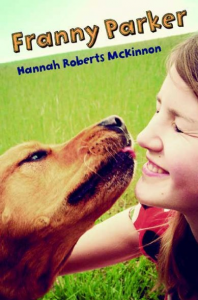
McKinnon, Hannah Roberts. Franny Parker. New York: Farrar Straus Giroux, 2009.
“Through a hot, dry Oklahoma summer, twelve-year-old Franny tends wild animals brought by her neighbors, hears gossip during a weekly quilting bee, befriends a new neighbor who has some big secrets, and learns to hope.” – FVRL. A wonderful story of first love for readers 11 to 14 years old. [Artists; Coming of age; Droughts; Family life; Family violence; Farm life; Friendship; Neighbors; Wildlife rescue]
Pressler, Mirjam. Halinka. Dell Laurel Leaf, 2000.
Twelve-year-old Halinka keeps her thoughts and feelings to herself while living in a home for emotionally disturbed children in post-World War 2 Germany. [Child abuse; Germany; Foster children; Emotional problems; Historical fiction]
Pyron, Bobbie. The Dogs of Winter. New York: Arthur A. Levine Books, 2012.
A five-year-old Russian boy survives with the help of feral dogs on the streets of Moscow. Based on a true story, this 306-page novel will interest competent readers 10 to 14 years of age who enjoy highly detailed plot-driven stories. Other readers will find the first few chapters quite compelling but may prefer to then skip to the last chapters to find out how the story ends. Even that abbreviated way of reading will create vivid memories of sad courage of homeless children in Russia. [Dogs; Gangs; Homelessness; Russia]
Ryan, Pam Munoz and Peter Sis. The Dreamer. New York : Scholastic Press, 2010.
This powerful novel of hope tells the story of Nobel Prize-winning poet Pablo Neruda’s childhood in Chile. A shy quiet boy with an authoritarian father who despised his son’s love of words, Pablo protected his younger sister and dreamed of another life. [Chile; Poets; Neruda, Pablo; Fathers and sons; Authors]
Schmidt, Gary D. Okay for Now. Clarion Books, 2011.
Fourteen-year-old Doug has just moved to a small town in New York State. He has a mean older brother and an abusive father. He can’t read and he has no friends. But slowly he makes friends with a classmate, with his teachers and with a librarian who teaches him how to draw. And after his oldest brother comes back from Vietnam, life starts to change at home, too. [Family life; Fathers and sons; New York (State); Schools; Friendship; Drawing; Violence; Child abuse; Audubon, John James; Theater; Brothers; Vietnam conflict, 1961-1975; Moving, Household; Dating (Social customs)]
Schmidt, Gary D. Orbiting Jupiter. Boston ; New York: Clarion Books, Houghton Mifflin Harcourt, 2015.
“Jack, 12, tells the gripping story of Joseph, 14, who joins his family as a foster child. Damaged in prison, Joseph wants nothing more than to find his baby daughter,Jupiter, whom he has never seen. When Joseph has begun to believe he’ll have a future, he is confronted by demons from his past that force a tragic sacrifice” FVRL. This acclaimed author’s novel, perhaps his most lyrical, is reminiscent of some of Patricia MacLachlan’s novels: emotionally powerful with short sentences and long conversations. It is highly recommended for readers 12-years-old and up. [Child abuse; Friendship; Foster children; Runaways; Teenage fathers; Winter]
Sterling, Shirley. My Name is Seepeetza. Douglas & McIntyre, 1992.
Twelve-year-old Martha secretly keeps a diary in which she records her life in a residential school during the 1950s where she is not allowed to use her real name, Seepeetza. [Boarding schools; Child abuse; First Nations; Salish Indians; Racism; Historical fiction]
Waldorf, Heather. Leftovers. Orca Book Publishers, 2009.
Fifteen-year-old Sarah is sentenced to community service where, with the help of a dog named Judy and a friend named Sullivan, she deals with the abuse she has suffered . [Child abuse; Dogs; Fathers and daughters; Juvenile delinquents; Friendship]
Walters, Eric. Power Play. Toronto: HarperCollins Canada, 2013.
Cody, determined to get away from his alcoholic father and into the NHL, finds himself trapped in a sexual relationship with a hockey coach. Includes an afterword by Sheldon Kennedy. Recommended for mature readers in grade eight and up. [Alcoholism, Fathers and sons; Hockey; Ontario; Secrets; Sexual abuse]
…
Werlin, Nancy. The Rules of Survival. Dial Books, 2006.
Seventeen-year-old Matthew recounts his attempts, starting at a young age, to free himself and his sisters from the grip of their emotionally and physically abusive mother. – CIP [Young adult fiction; Brothers and sisters; Child abuse; Emotional problems]
I recently read a great book called The Rules of Survival by Nancy Werlin, (Speak, 2006). The main character, Matthew Walsh, otherwise known as Matt, lives in the terrifying custody of his abusive, moody mother, Nikki, who has troubles controlling her emotions and actions, even after severe punishment, along with his two sisters, Callie and Emmy. There are all sorts of complications in this novel. One main problem is Nikki, who wants revenge on her ex-boyfriend, Murdoch, who has broken up with her after he seeing her explode and reveal her character hidden behind her nice mom and loving Nikki costume. Her anger and efforts to get revenge go beyond all measure. her wrath is unleashed upon everyone. Meanwhile, Matt tried to protect Emmy from Nikki, for that is his life-time goal, to protect Emmy. In the end, the three children get out of Nikki’s custody. Callie ends up living with her, and Matt’s biological father, while Emmy and Matt go to live with their Aunt Bobbie, Nikki’s sister. Matt has plans to go to university. For a story with such a suspensful plot, I think this novel has a wonderful ending. I can tell you that this novel was one of the most intriguing stories I’ve read all year. (Ann in grade eight)
White, Ruth. Tadpole. Farrar, Straus and Giroux, 2003.
During the summer of 1955, four Collins sisters – Kentucky, Virginia, Georgia and Carolina – discover their thirteen-year-old orphaned cousin is being brutally mistreated by the guardian who is supposed to be taking care of him. So, along with their single mother, they decide to rescue him. (Poverty; Historical fiction; Orphans; Humorous stories; Summer; Cousins; Family life; Child abuse; Runaways)
